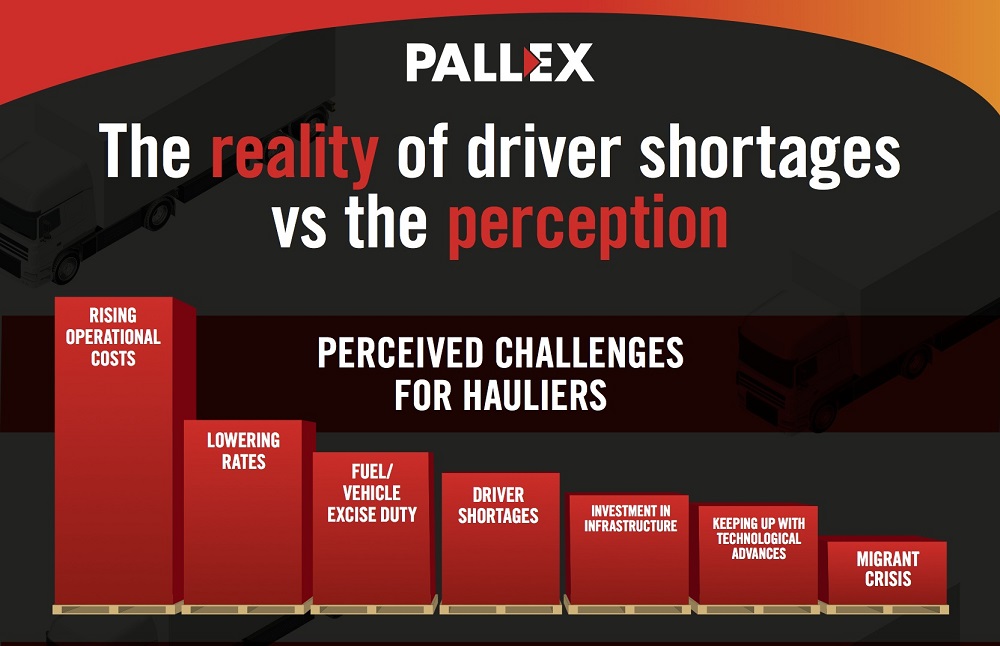Impact of Driver Shortages Yet to Peak Says Study
8th June 2016

The impact of driver shortages is yet to peak, according to a national study from the UKs leading palletised freight network.
The research, conducted by Pall-Ex, surveyed one hundred hauliers up and down the country, assessing what issues are perceived to affect the industry the most, and how businesses are tackling them.
The future impact of driver shortages is even worrying the 40.6 per cent of hauliers that are not currently short of drivers.
The main perceived reasons for driver shortages are ageing population (37.5 per cent), followed by a negative perception of the industry (25 per cent) and competition from other sectors (15.6 per cent).
Kevin Buchanan, managing director of Pall-Ex Group, said, This insight into the concerns and causes of driver shortages is evidence that the sector seriously needs to invest in attracting, recruiting, and retaining young talent as our workforce retire or decide to change careers.
The industry has a self-esteem problem, so by refusing to undercut on price, networks can operate more sustainably by then reinvesting back into new and existing drivers.
Financial impacts including rising operational costs and fuel duty are also cited as key barriers to growth and success for hauliers.
Currently, 59.4 per cent of hauliers spend less than 10 per cent of their expenditure on training and development of new and existing staff. The majority of hauliers (78.1 per cent) perceive driver shortages as a fairly recent issue, having become a problem for the industry only within the past 5 years.
Kevin added, If increasing costs are seen as a real problem for the industry, that explains why firms arent brave enough to be investing in their teams. This needs to change.
Separate research by the Freight Transport Association (FTA) has shown that over the last five years there has been a steady increase in average driver age, rising from 45.3 years in 2001 to 48 years at the present time. Around 64 per cent of HGV drivers are 45 years or older and only 1 per cent of employed drivers are under 25.
Furthermore, FTA members have reported difficulties in recruiting drivers in recent months. In Q2 2009 around 20 per cent of respondents to an FTA quarterly survey had problems recruiting LGV drivers; this rose to almost 75 per cent in Q1 2016.
Echoing Kevins comments about widening the driver talent pool, Karen Dee, FTA director of policy, said:
The industry is rightly concerned about the on-going shortage of skilled staff and the ability to attract new and younger recruits. The increasing average age of drivers; the dramatic reduction in the pool of available qualified staff; and increasing competition from other sectors also looking for new recruits, mean that, as an industry, we need a determined effort to let people know how varied, interesting and rewarding a career in logistics can be.
In addition, the migrant crisis often discussed in the press ranks lowest on average in the list of concerns, according to Pall-Exs research.

